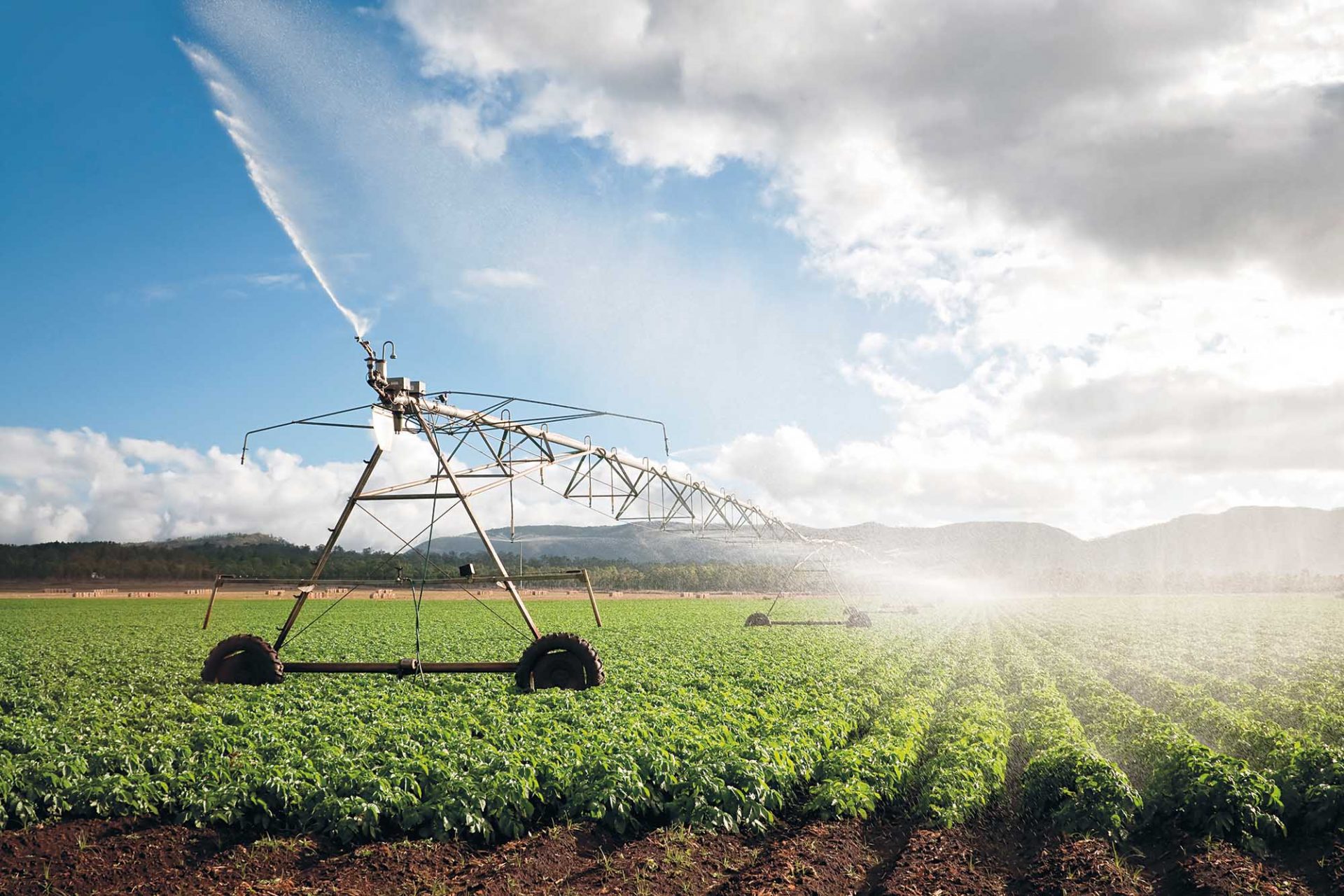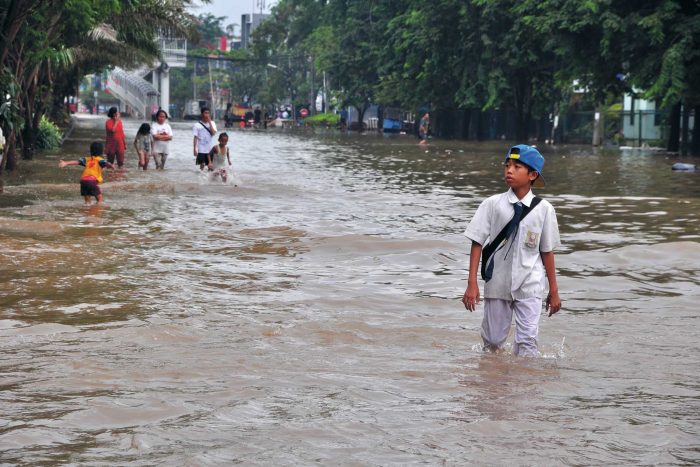From Food Bowl to Health Food Store

The ability to deliver sustainable development is the opportunity our generation must embrace and our best opportunity to do that will be the global economic powerhouse for the coming decades - Asia.
Nothing connects us like food. Sharing a meal is a universal symbol of togetherness and, for many of us, our first introduction to different cultures is in a bowl or on a plate. Food also plays an important role in our sense of who we are and where we come from and, while we may rightly bemoan a feeling of disconnection from our food supply, the provenance of our food is becoming increasingly important to many of us, culturally, practically and politically. In our hyper-connected world, new technologies also make it easier than ever for us to discover, verify and share where our food comes from and how it is produced.
On a much more prosaic level, whether we realise it or not, the food we eat is probably our most direct connection to our natural world and our food choices have a much greater impact on the environment than most people realise.
Food production currently uses 40 per cent of global land area, 70 per cent of the world’s fresh water, generates 20 per cent of greenhouse gasses and uses 30 per cent of global energy. This is even more alarming when we consider that, with a projected population of more than 9 billion by 2050, the world will need to produce 70 per cent more food than we do today.
Further, the rapid emergence of middle-classes, especially across Asia, is accompanied by an increasing demand for resource-intensive animal protein. Across Asia, annual growth in the consumption of eggs, meat and milk is projected at 9, 8 and 11.85% respectively, significantly higher than the average projected global growth rates.
Based on our current food production system, this growing demand can only result in further destruction of our natural land and marine environments and the continuing catastrophic loss of biodiversity. With our remaining natural forest land cleared for agriculture and more excessive use of pesticides, herbicides and fertiliser and unsustainable fishing practices causing irreparable harm to marine ecosystems, we may be able to produce enough food in the short term, but not for long. In short, we must transition to sustainable food production and consumption – and within the next decade!
This is a pretty bleak image, but what if it were an enormous opportunity? Could the demands of Asia’s growing middle class actually drive a positive shift in the way we produce food, both here and in our region?
For a brief period, some Australian political and business leaders looked at Asia’s economic growth as an opportunity for Australia to become the “food bowl” of Asia. This idea promised new economic opportunity, particularly for Australia’s north. However, it was dismissed by all but its most fierce advocates when it was rightly pointed out that even if we doubled our food production, we still wouldn’t be able to feed half of Indonesia’s current population.
Increasingly, Australian politicians, businesses and farmers are starting to position Australia instead as Asia’s delicatessen, recognising the opportunity for innovative producers to provide high quality, value added, specialty food to Asia’s discerning middle classes. When we look at what motivates a growing number of Asian consumers, however, perhaps it is more apt to see this as an opportunity to position Australia as the region’s healthy food store.
Asian consumers are turning to healthy products
China’s middle class, which is expected to account for more than 51% of the country’s population by 2020, have become the most health conscious shoppers in the world, with 73 per cent% of consumers surveyed by Boston Consulting willing to pay more for premium, healthy products (that is 12 points higher than the global average). This growing concern with personal health and well-being appears to be spreading across the region, as demonstrated by Asia’s $53 billion market for vitamins and dietary supplements, representing 20, 15, and 11 per cent market growth in Vietnam, Indonesia and Thailand respectively.
Some Australian companies, like Blackmores, have embraced this opportunity, becoming the leading health brand in Thailand and China now accounting for a third of their market. It is notable that Blackmores is also ensuring that its products support a healthy environment, partnering with WWF to safeguard the sustainability of its seafood supplies and supporting marine conservation projects throughout the region.
Of course, healthy food stores sell more than vitamins and supplements, and Austrade regularly reports on the high demand for Australian products and produce across Asia, including specialty cheese products and wine, but also meat, seafood, fruit, leafy salad vegetables, kale, broccoli, carrots and onions. All of these can be produced locally, but as a 2015 study published in the Journal of Economic and Social Policy demonstrates, many middle class consumers in China, for example, are willing to pay more for food products bearing the “Green Food” label, which refers to “food that is grown in a safe and ecologically sound manner”. While the study found that the perceived healthiness of “Green Food” was the primary factor influencing consumer choice, pesticide use and the environmental impacts of food production and packaging were also significant motivators, and Chinese consumers are more likely to trust the clean and green claims of international products.
This is obviously a great trade opportunity, but how big? There are already innovative producers that are investing in adding value to their products, but the untapped potential is in the many Australian farmers already farming in safe and ecologically sound ways, but not getting the full economic benefits. It is also a great opportunity for the environment, as the ease with which modern technologies enable consumers to trace the provenance of their food and assess the veracity of “clean and green” claims mean that Australia and Australian producers have a vested interest in protecting the “green food” reputation of its exports. It also creates a financial incentive for farmers and agribusiness to re-examine the cost-benefit calculations of excessive pesticide use, the promotion of chemical fertilisers and other environmentally harmful agricultural practices that would lock them out of these lucrative, emerging markets.
The good news is that we know that such incentives work. For many years WWF has been working with some of the world’s biggest companies to respond to Australia’s growing consumer demand for more sustainable, ecologically sound food choices. For example, over the last decade seafood consumption has steadily increased in Australia, with the average Australian eating 15 kilograms of seafood in 2012-13 up from 13 kilograms in 2000-01. Australian fisheries are not able to sustainably meet this demand, and it is estimated that 70 per cent of seafood that Australians eat is imported, largely from the Asia-Pacific region.
Unsustainable fishing practices have significant and far-reaching environmental, social and economic affects, and awareness of the issues of inequity, human rights and environmental destruction, has been growing rapidly in recent years. WWF works closely with Australian companies like John West Australia, Coles and Tassal and certification bodies like the Marine Stewardship Council (MSC) and Aquaculture Stewardship Council (ASC) to help seafood companies and retailers transition to stocking only ecologically sustainable seafood products, wherever they come from. Earlier this year, John West Australia announced that 100 per cent of its canned tuna (that’s a 100 million cans each year, or 43 per cent of the branded canned tuna market in Australia!) is now certified by the MSC, and Coles has become the country’s first national supermarket to offer MSC and ASC certified products in its delis. The growing market for sustainable seafood, and the leadership being shown by these Australian companies that facilitate these markets, create a powerful incentive to encourage and support fisheries and fishing communities all over the Asia-Pacific region to adopt more sustainable practices.
Just as Australian consumer choices are driving more sustainable food production practices in Asia and the Pacific, so too can Asia’s demand for cleaner, greener options encourage more Australian producers to reconsider their own relationships with the natural environment. Is this going to solve the problem of producing enough food for the 9 billion people of the future? No, because in reality, not many people can afford to buy all their food from a healthy food store. Meeting the food needs of our growing population will require a smart mix of solutions, including innovative approaches to producing more food with fewer resources, finding more sustainable and equitable modes of distribution and, crucially, addressing the fact that more than a quarter to a third of all food intended for human consumption is wasted. However, fostering and taking advantage of the growing demand for clean, green and healthier food will be an important part of the solution.
Brand Australia must embrace sustainable agriculture
This is not an opportunity that we, as a country, can simply take for granted. While it has a strong global reputation for our products, Australia is not the only country offering clean, green and healthy food to Asia’s discerning and health-conscious markets and reputations can be easily lost. If Australia is to reap the economic and environmental benefits of these emerging consumer demands, we need the policies and programs in place to support, protect and promote Australia’s role as a global leader in the production of safe and ecologically sustainable food.
A genuine commitment to “clean, green and healthy” should be at the centre of any Brand Australia approach and that commitment needs to be backed up by forward-thinking domestic agricultural policies, including support for robust and reputable sustainability certification mechanisms, plus research and agricultural extension that emphasises improving the environmental sustainability of Australian agriculture.
Equally, our international development and trade policies and investments can help provide our region with Australian expertise and know-how – especially from business –that will benefit producers and consumers.
Not only would this deepen and broaden our cooperation with our Asian neighbours and trading partners, it would strengthen both our ability to manage the multiple disruptions to our economy and society in Australia. The ability to deliver sustainable development is the opportunity our generation must embrace and our best opportunity to do that will be the global economic powerhouse for the coming decades – Asia.













